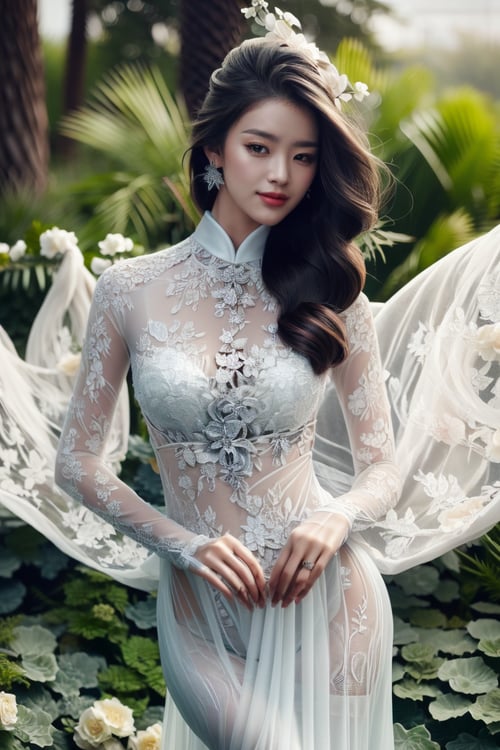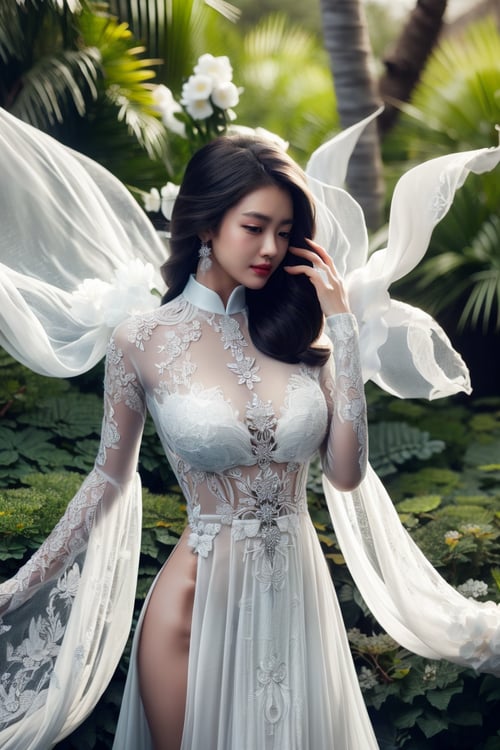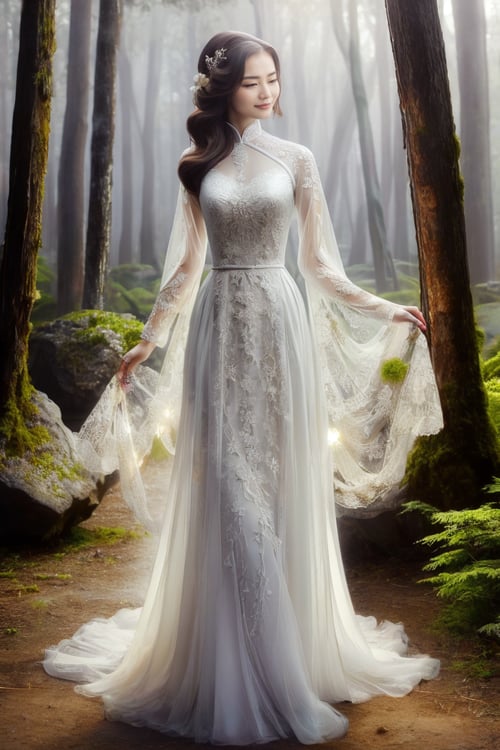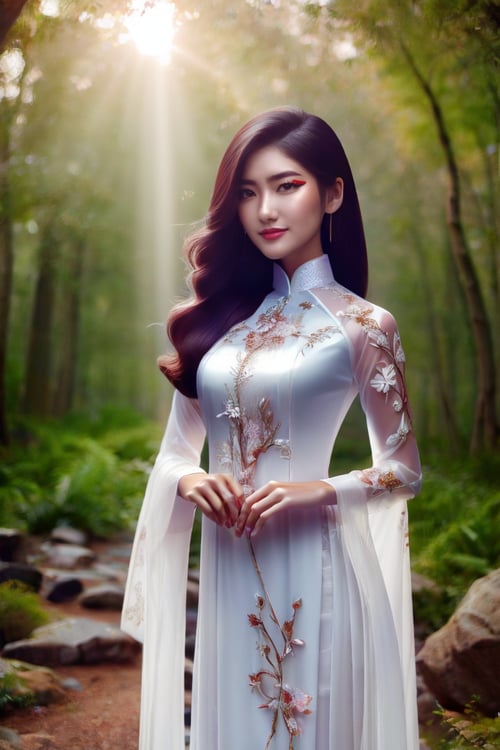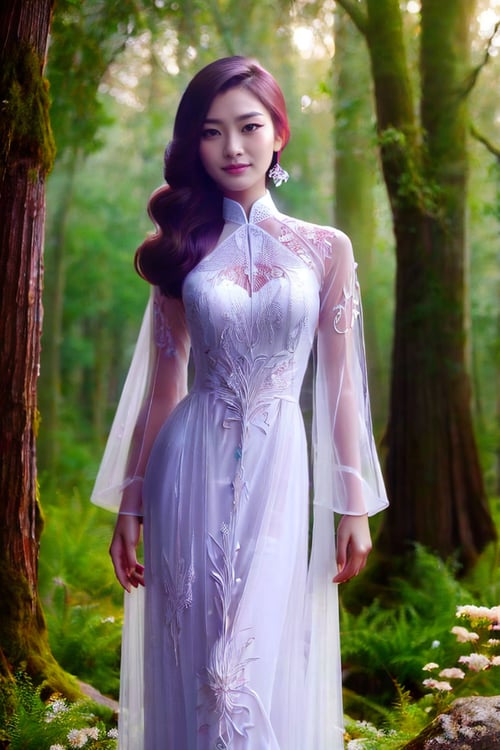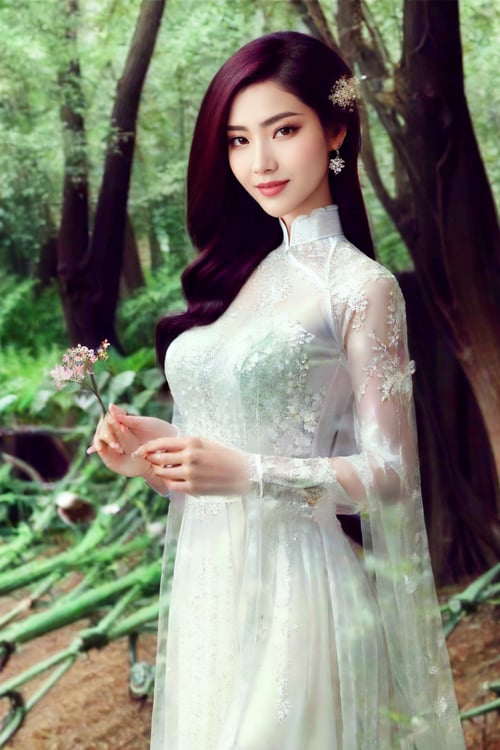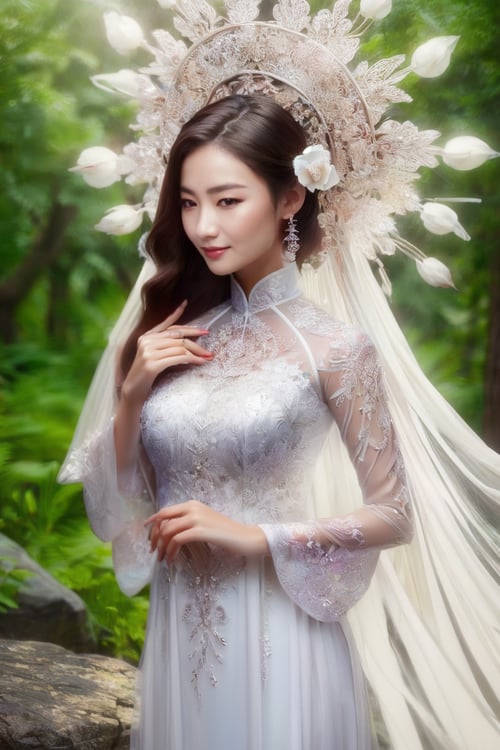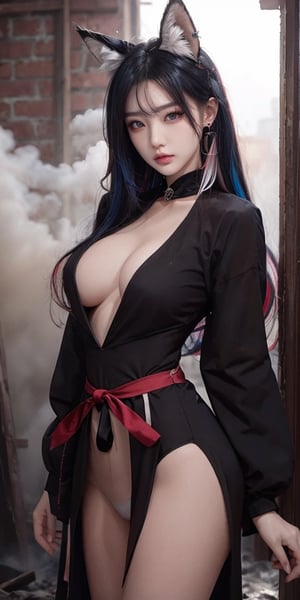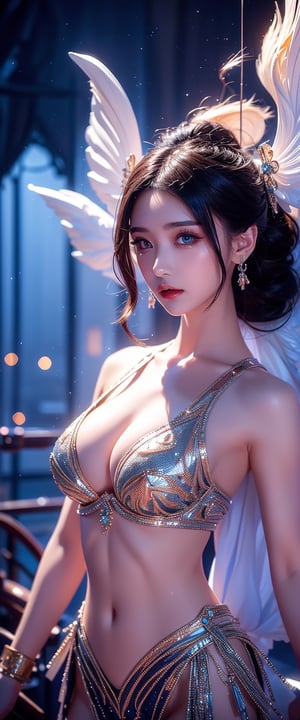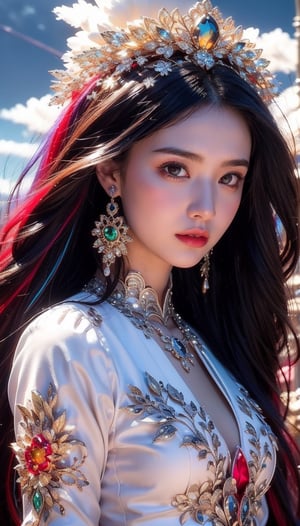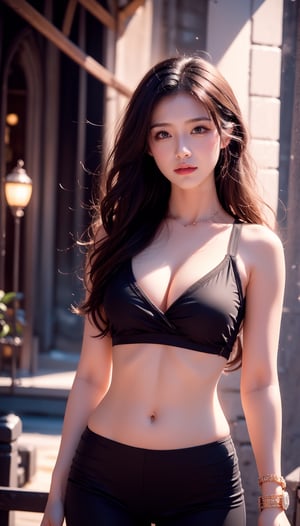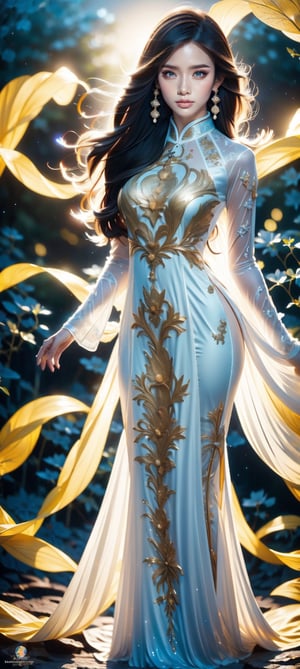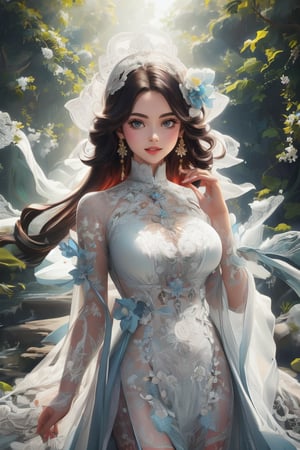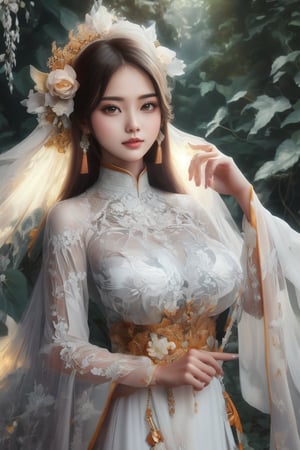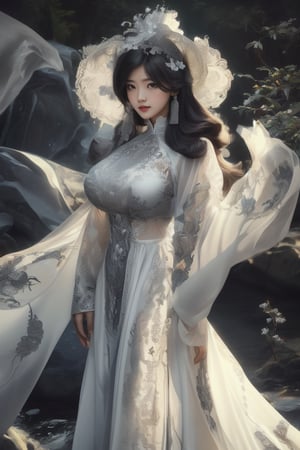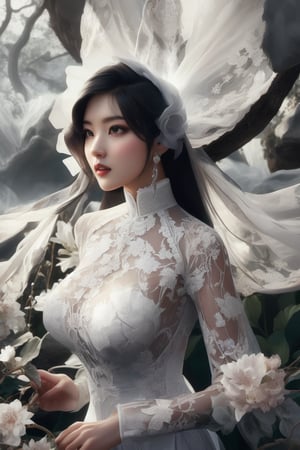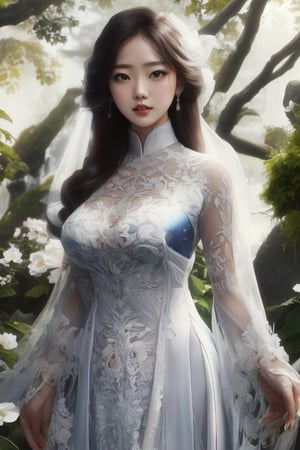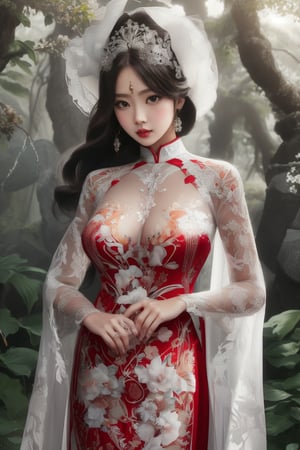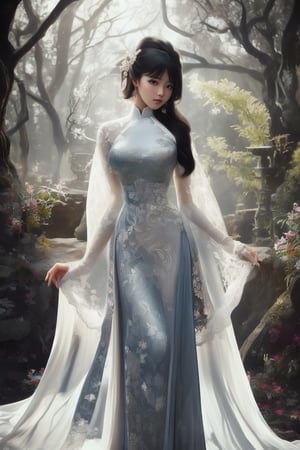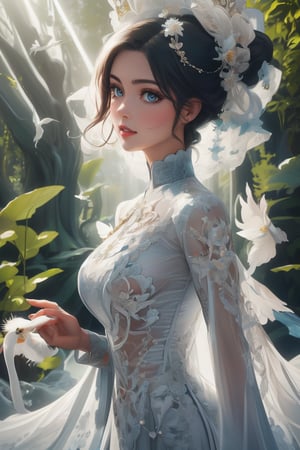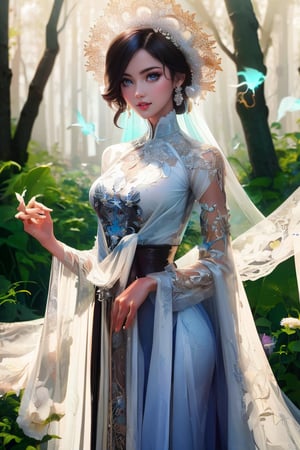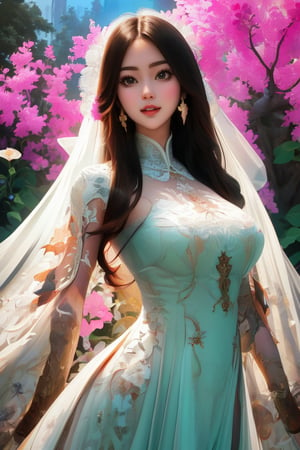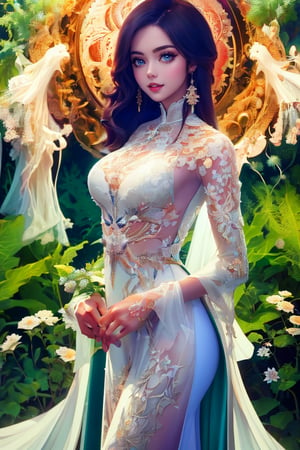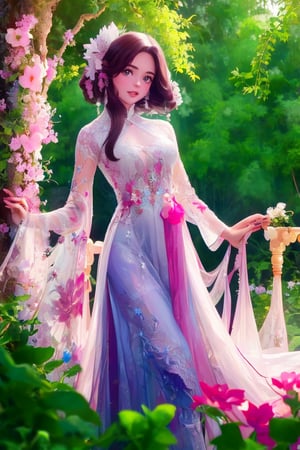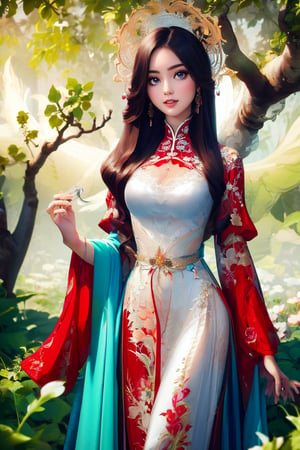The áo dài is a traditional Vietnamese dress that has evolved over the years to become a symbol of beauty and elegance in Vietnam. It is a long, form-fitting dress that is worn by both men and women. The dress consists of a long split tunic that is worn over silk trousers. The dress has a rich history that dates back to 1744 when Vietnam was divided into two territories, the Inner Land (Đàng Trong) and Outer Land (Đàng Ngoài). The dress was originally a five-part dress called áo ngũ thân and was worn by the people of Inner Land to distinguish themselves from the people of Outer Land. The dress was later simplified into two parts by Vietnamese artist Le Mur Nguyễn Cát Tường in the 1930s. The dress became more popular after Le Mur designed an áo dài collection for Queen Nam Phương, wife of Vietnam's last Emperor Bảo Đại. Nowadays, the dress is worn by ladies of all ages for professional appearances and special occasions. Female high school students are also required to wear the dress for at least one day a week.
If you're interested in learning more about the history of the áo dài and its many variations, you can visit the áo dài collection on permanent display at the Vietnamese Women's Museum in Hanoi. Modern designers have also explored creative routes when it comes to the áo dài, with some new takes on the traditional dress making it more practical for less formal settings. Knee-length styles are convenient for wearing on motorcycles and bicycles, and you’ll see a variety of more casual collars worn on summer days, including scoop neck and boat neck styles.




